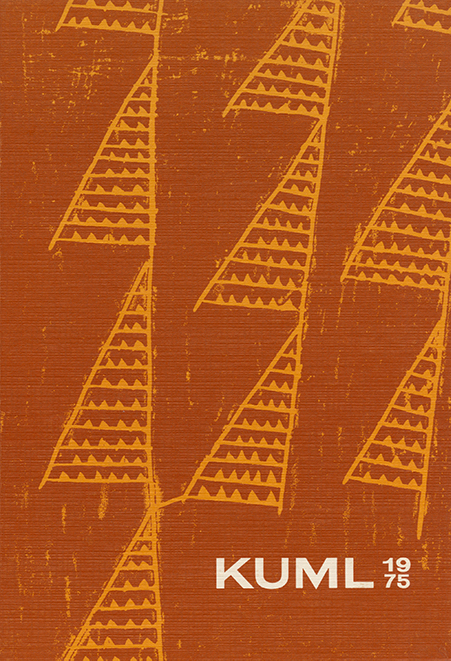En høj i Hjerpsted
DOI:
https://doi.org/10.7146/kuml.v24i24.106162Nøgleord:
hjerpsted, barrow, gravhøj, ploughed-down, nedpløjet, overpløjet, plough marks, pløjesporResumé
A barrow at Hjerpsted
In the spring of 1974 a large ploughed-down barrow was excavated about 1 km south of Hjerpsted Church, near the west coast of Schleswig.
It soon became clear that the mound had been excavated earlier. A central excavation under the topoil measuring 7 X 7 m showed that a professional had been at work. Examination of the National Museum archives revealed that it was the archaeologist Thomas Thomsen who had excavated in the barrow in 1925. In two letters, sent from Hjerpsted to the Museum, he wrote of a primary grave at the base of the tumulus, and of a bronze axe higher up, which in his opinion represented a grave. But it emerged that he had not found all the graves 49 years ago: three phases of construction could in fact be ascertained, all from the Early Bronze Age.
Phase I, constructed of clay sods and large stones, contained a man's grave with a flint dagger of type VI B (5), which dates the grave to the Bronze Age, Period I. It was found and excavated by Thomsen in 1925.
Phase II was constructed of humus with an admixture of hard pan, placed over a large heap of stones around a grave (excavated in 1974). The grave contained, in addition to distinct traces of a skeleton, which showed that the body had been laid outstretched on its back, at the hips a flint dagger of type VI A, dated to the Bronze Age, Period I.
Phase III was also built of turf, presumably above the grave represented by Thomsen's axe.
From phase II the 1974 excavation also yielded a small clay pot. The context does not reveal whether this also represents a grave or should be interpreted as a votive vessel placed in the side of the barrow.
But the most important new observation at the Hjerpsted barrow was the presence of plough marks in connection with the stone circle of phase I in the SE quadrant. Ploughing is thought to have been carried out as a preparatory measure before placing the large kerb stones in position.
A parallel was seen in another ploughed-down barrow, excavated in the same period by Ålborg Historical Museum. This is called Aggersund Kalkværk, and the plough marks under the stone circle are dated by the central grave, which contained two flint daggers of type I (9), to at the earliest the Late Neolithic; they are older than the secondarily placed, but empty stone cist which lay over them, which by form, type and position must be dated to the Early Bronze Age.
Stine Wiell
Downloads
Publiceret
Citation/Eksport
Nummer
Sektion
Licens
Fra og med årgang 2022 er artikler udgivet i Kuml med en licens fra Creative Commons (CC BY-NC-SA 4.0).
Alle tidligere årgange af tidsskriftet er ikke udgivet med en licens fra Creative Commons.


